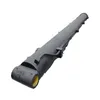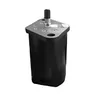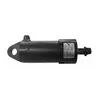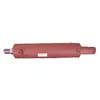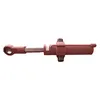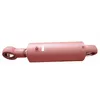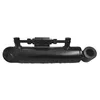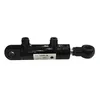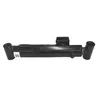A hydraulic cylinder is a mechanical actuator that converts hydraulic energy into linear motion and force. It is used in various applications, including construction equipment, manufacturing machinery, and automotive systems. These devices are essential for heavy-duty operations requiring precise control and high power output.
| Parameter | Description | Typical Range |
|---|---|---|
| Bore Size | Diameter of the cylinder barrel | 1.5" to 24" |
| Stroke Length | Distance the piston travels | 1" to 20 feet |
| Operating Pressure | Maximum pressure the cylinder can handle | Up to 5000 PSI |
| Rod Diameter | Diameter of the piston rod | 0.5" to 12" |
| Mounting Style | How the cylinder is attached | Flange, Clevis, Trunnion |
| Material | Construction materials | Steel, Stainless Steel, Aluminum |
What is the lifespan of a hydraulic cylinder?
The lifespan depends on usage, maintenance, and operating conditions. With proper care, it can last 10,000 to 20,000 hours or more. Regular maintenance, such as seal replacement and fluid checks, extends longevity.
How do I choose the right hydraulic cylinder for my application?
Consider factors like required force, stroke length, operating pressure, and mounting style. Consult technical specifications and possibly an engineer to match the cylinder to your needs, ensuring compatibility with your system's hydraulic pump and fluid.
What causes hydraulic cylinder failure?
Common causes include fluid contamination, seal wear, misalignment, overpressurization, and lack of maintenance. Contaminants like dirt can damage internal components, while worn seals lead to leaks and reduced efficiency.
Can hydraulic cylinders be repaired?
Yes, many hydraulic cylinders can be repaired by replacing seals, rods, or other damaged parts. It's often cost-effective compared to buying new ones, but severe damage like a cracked barrel may require replacement.
What is the difference between single-acting and double-acting hydraulic cylinders?
Single-acting cylinders use hydraulic pressure to move in one direction and a spring or gravity for return. Double-acting cylinders use hydraulic pressure for both extension and retraction, offering better control and force in both directions.
How do I maintain the hydraulic fluid in my cylinder?
Use the recommended fluid type, check levels regularly, and change fluid as per manufacturer guidelines. Keep the system clean to prevent contamination, and use filters to remove particles that could cause damage.
What are the signs of a failing hydraulic cylinder?
Symptoms include slow operation, fluid leaks, irregular movement, unusual noises, and loss of pressure. Address these issues promptly to avoid further damage and downtime.
Are hydraulic cylinders customizable?
Yes, many manufacturers offer custom options for bore size, stroke length, mounting styles, and materials to meet specific application requirements. Provide detailed specs for accurate customization.
What safety precautions should I take with hydraulic cylinders?
Always depressurize the system before maintenance, use proper lifting equipment for installation, and wear protective gear. Follow operational guidelines to prevent overloading and ensure safe usage.
How does temperature affect hydraulic cylinder performance?
Extreme temperatures can cause fluid viscosity changes, seal degradation, and thermal expansion. Use appropriate fluids and materials for your environment, such as high-temperature seals for hot conditions.
